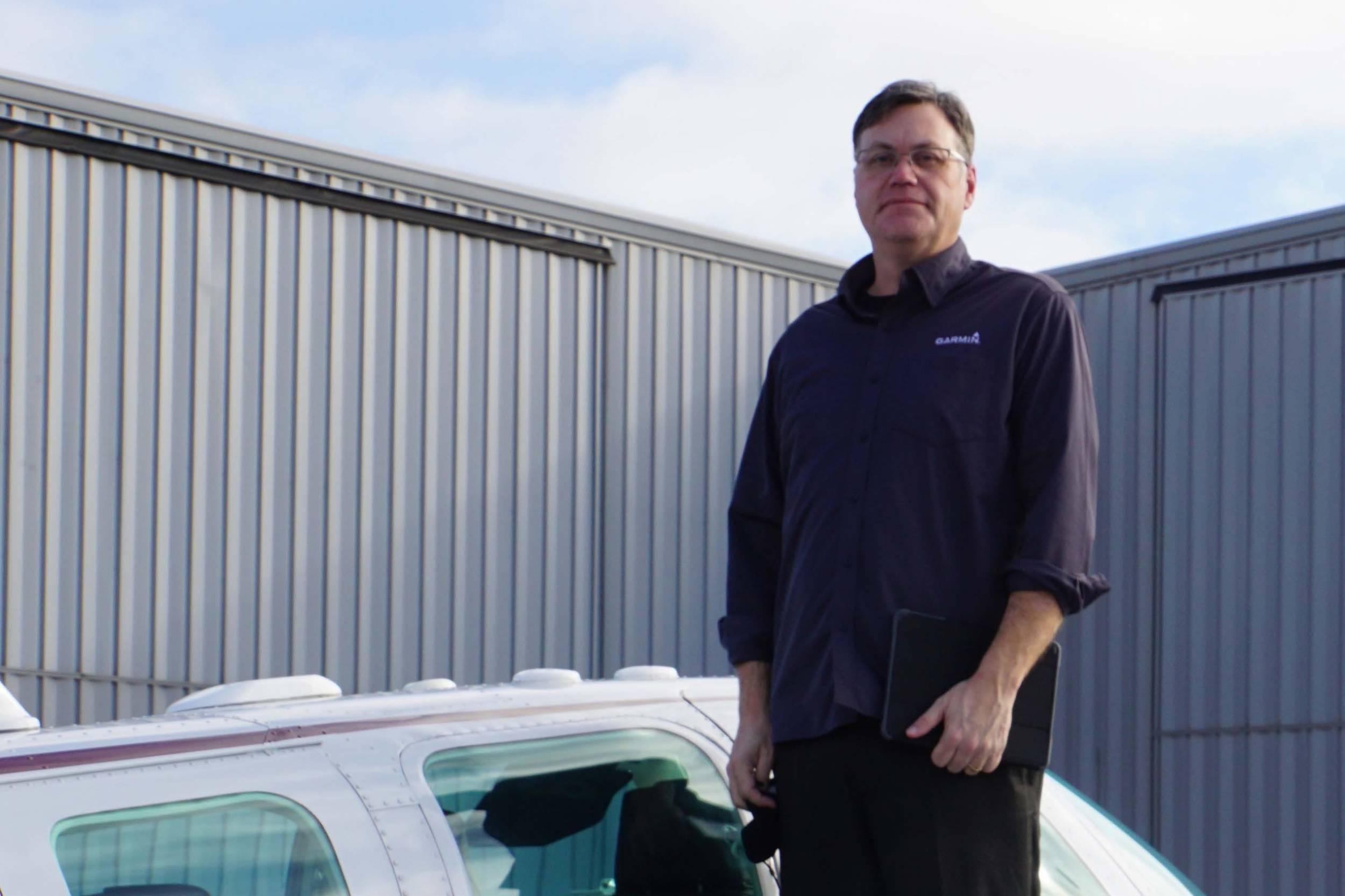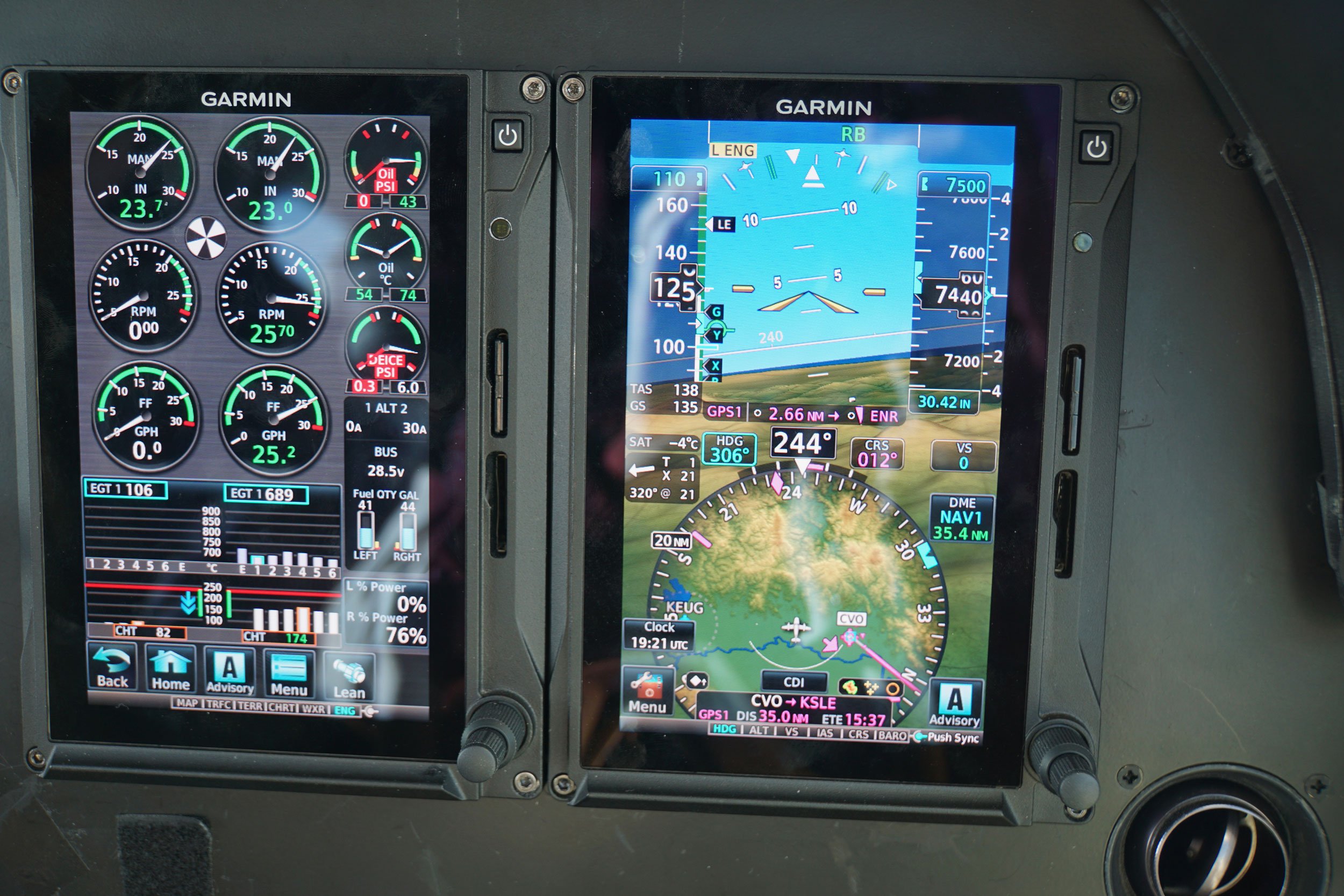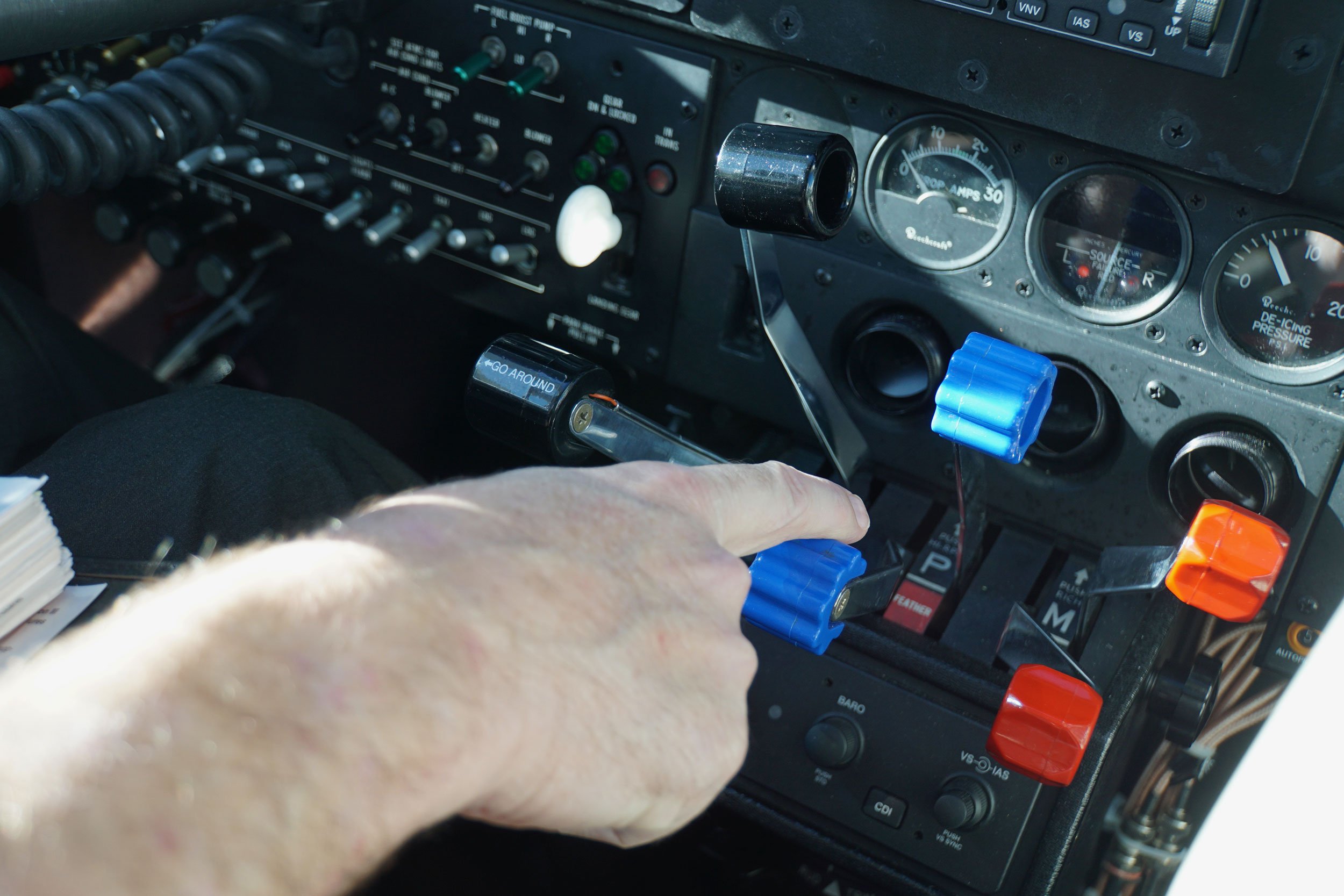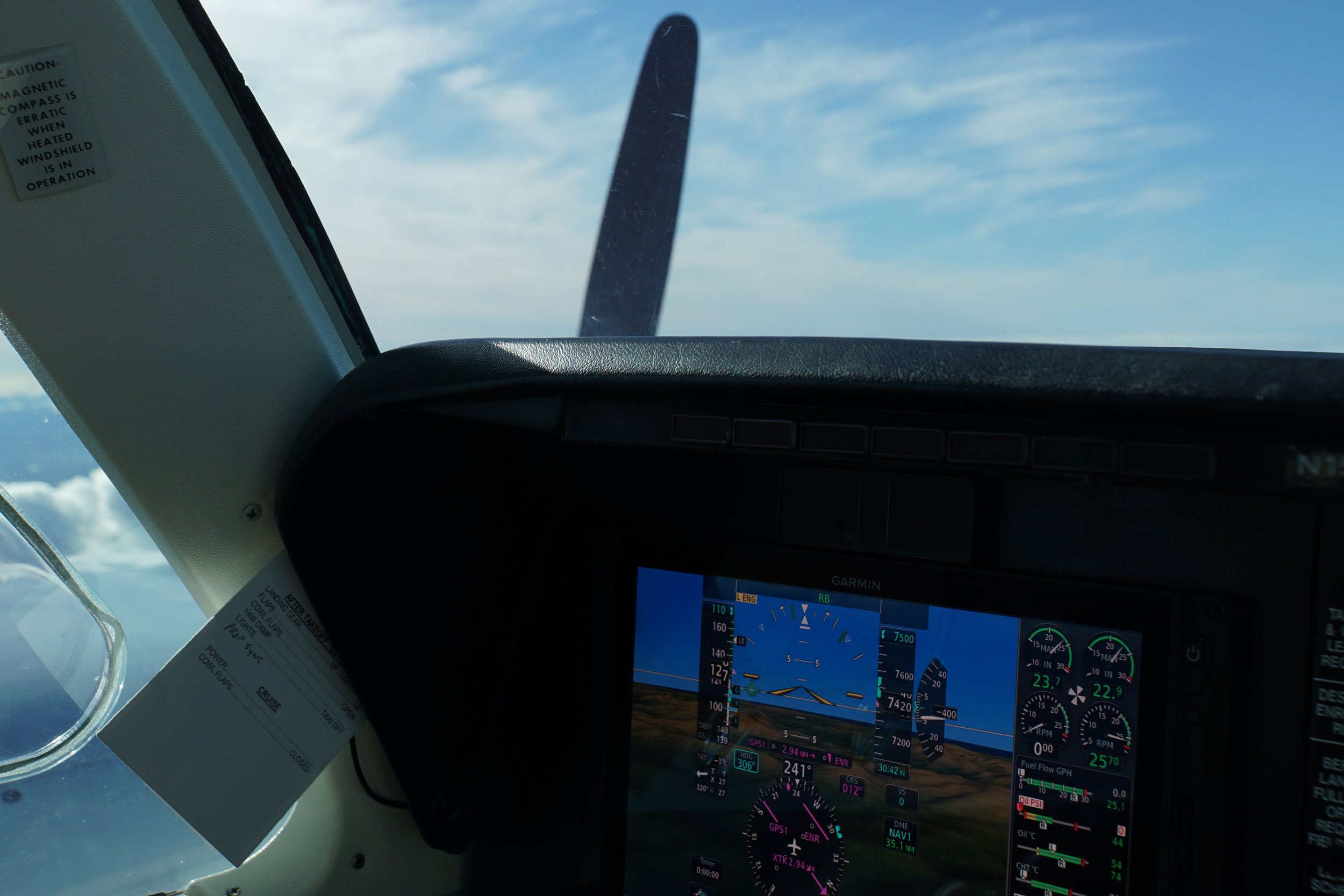Modern avionics create opportunities to add new safety features to older aircraft, and Garmin has taken advantage of these technologies to help pilots during the critical time when an engine fails on a twin-engine, piston-powered airplane.
Garmin’s new Smart Rudder Bias (SRB) not only adjusts rudder force to help control sideslip after engine failure, but it works with Garmin’s Electronic Stability and Protection (ESP) to help the pilot control bank and avoid flying too slow. This sets SRB apart from typical rudder bias systems, which are found in many multiengine turboprop and jet airplanes but aren’t connected to envelope-protection systems.
Loss of control after failure of one engine in twin-engine piston airplanes is a significant safety issue and may in part explain why piston twin popularity has dwindled as buyers flocked to high-performance single-engine airplanes, especially those carrying full-airframe parachutes. SRB technology could help revive interest in piston twins when owners upgrade them with modern Garmin avionics, possibly spurring new interest in this type of airplane.
SRB is certified in the Beechcraft Baron B58/58A and Piper Navajo PA-31-300 through 325. Garmin is working on other piston twin types but hasn’t yet identified which will be next, although plans call for adding more airplanes that are on the GFC 600 approved model list. The required equipment for SRB includes Garmin’s G500 or G600 TXi configured as a primary flight display with Engine Indication System (EIS) and GFC 600 autopilot with yaw axis option. There is no extra charge for the SRB software, and airplanes already equipped with G500/G600 TXi, and EIS can be upgraded to take advantage of SRB with the addition of the optional yaw servo (once that particular model receives SRB approval).
Automation Features
SRB is part of Garmin’s Autonomi family of automated technologies, which includes Autoland. Garmin test pilot Brandon Tilby explained the rationale behind SRB, pointing out that its primary purpose is to reduce the pilot’s workload and give the pilot more time during an engine-failure event when the airplane remains fully in control. That time can be used to identify the failed engine, shut it down safely, and run the emergency checklist. “There is a lot going on [during an engine failure in a twin],” he said. “The pilot might need a little bit of help.”

SRB primarily helps overcome the consequences of asymmetric thrust, which causes the big yawing moment in the direction of the failed engine, as well as loss of lift on the failed engine wing and airspeed loss because of sideslip and increased drag.
Even after helping the pilot by automatically “stepping” on (applying) the correct rudder control to help counteract the yaw—which is what ordinary rudder bias systems do—SRB goes a few steps further.
First, it lights up a yellow annunciator next to the autopilot “scorecard” or mode annunciator on the PFD, so the pilot can instantly see which engine has failed before there is even time to sing out the “dead-foot, dead-engine” mantra or to look at the engine instruments to decipher which ones might signal an engine failure. In some normally aspirated piston twins, the manifold pressure gauge on the failed engine, with its propeller still turning, might still show the same indication as the good engine, which can further confuse the pilot. The fuel flow gauge would show the true story, but by then, the pilot will have lost valuable time.

At the same time, ESP automatically assists when an engine fails. If the pilot does nothing, ESP will eventually tell the autopilot to engage, and although this isn’t the correct process according to the SRB engine-failure checklist supplement, this can add an extra layer of assistance.
In normal operation, ESP has thresholds where the autopilot servos “nudge” the controls to tell the pilot that the airplane is nearing a bank or pitch limit. The nudge tells the pilot to reduce the pitch or bank to remain safely within limits. But in the case of an engine failure and the attendant yaw, which only gets worse as the airplane slows closer to Vmc (velocity minimum control), the bank threshold needs to be reduced, and it moves lower, to 10 degrees on the failed engine side in the Baron, for example. These new but temporary bank thresholds are shown on the PFD. The pitch attitude threshold adjusts to help the pilot maintain control, and the underspeed ESP feature helps the pilot avoid getting too close to Vmc.

Of course, with a Garmin G500/G600 autopilot, the pilot could simply push the LVL button at any time, and the autopilot will do its best to stay level but will also protect from underspeed by lowering the nose if sufficient power is not available to stay level. In any case, the LVL button push is also not in the checklist during this engine-failure emergency. The idea is to keep the pilot in the loop, not to remove the pilot from understanding what needs to be done to operate the airplane safely and deal with the emergency.
SRB isn’t available during takeoff, at least not until the airplane exceeds Vmc, but it remains armed unless the pilot turns off the SRB switch on the panel. The pilot can also disable ESP functions, including SRB, by pressing and holding the autopilot disconnect switch on the yoke. Doing so for more than 10 seconds turns ESP off.
Garmin is preparing training videos to help pilots learn how SRB works and there is a supplement to the flight manual and a pilot’s guide. “There’s not a lot for the pilot to do once the system is engaged,” Tilby said. “It can stay on during the identify, feather, and securing engine procedures. The system is designed to aid the pilot and not take over decision making. We didn’t want to override the control forces the pilot would feel to normally identify the problem. We can control the amount of yaw output based on airspeed [and other parameters] to undershoot so the pilot still has that feel and can recognize it.”
Demo Flight
Tilby took me flying in Garmin’s B-58 Baron to demonstrate how SRB works.
We took off from Garmin’s West Coast facility in Salem, Oregon, and climbed to 7,500 feet near Corvallis. With power set to 65 percent, Tilby pulled the right engine back to 30 percent then added more power on the “good” left engine. I could feel SRB engaging with my feet resting on the rudder pedals and saw the new ESP bank thresholds on the PFD. These turn yellow as the bank approaches a threshold. When Tilby increased the power on the left engine, SRB automatically shut off, and I could feel a “clunk” as the yaw servo disengaged.

Next, Tilby chopped power by pulling back the left throttle abruptly. The nose dropped, but ESP and SRB engaged, pulling the nose back up and stepping on the rudder to correct the yaw and giving the pilot time to deal with the emergency. Tilby switched off SRB so I could feel the difference in rudder control required. Even with SRB on, however, to fully eliminate the yaw due to the failed engine, the pilot does need to step on the rudder a bit, which helps keep the pilot well in the loop.
Setting up the Baron at the best rate of climb speed, Tilby pulled the left engine’s mixture control full aft, shutting that engine off completely in a configuration that simulates the after-takeoff mode. SRB took on the rudder-pushing duties, although the Baron still was turning a little to the left and needed more right rudder, while ESP kept the airspeed at a safe level. Tilby calmly identified the dead engine and verified it by pulling its throttle back then feathered the left propeller. “Now let’s get out the checklist,” he said.

After double-checking the normal engine-failure items, the checklist called for switching off the autopilot and retrimming the elevator, then the pilot can turn the autopilot back on if needed. The SRB system clearly made it a lot easier for Tilby to handle the emergency, eliminating the worry about being too slow and possibly losing control because the yaw can’t be overcome below Vmc. It also gave him that extra time to handle the emergency because he wasn’t rushing to get important steps done in fear of losing control of the airplane.

Development and Testing
Garmin engineers have been working on SRB for about two years, with proof-of-concept flight testing beginning in October 2019 and certification completed this past May for the Baron and in November for the Navajo.
“We did a lot of analysis on the ground to determine if we wanted it full-time from the start of takeoff,” said Tilby. “That’s why elected to use Vmc as the engage point. We didn’t want the system to do things on the ground that the pilot didn’t know about. There’s nothing new from the start of takeoff to landing gear coming up so you can abort the takeoff as you normally would if you have an engine problem.” Testing was done at a variety of speeds with the failed engine’s propeller feathered and unfeathered. “We were able to augment yaw forces with the rudder servo and tune roll and pitch in ESP based on what we saw in the aircraft,” he said.
Engineer Travis Locke is product manager for the SRB retrofit program at Garmin’s Salem facility and worked closely with software engineers at Garmin’s headquarters in Olathe, Kansas.
“I was involved with the initial discussions of the vision of what we were hoping to accomplish with this,” Locke said. “We met the goal we set out to meet. My biggest moment in development is the first time we were actually able to try it out on the airplane.”
“It was a pretty great experience,” said Tilby. “This was one of the few times in my career where I got to flip the switch the first time. It worked just as well as we hoped.”
Phil Straub, Garmin executive v-p and managing director of aviation and a longtime pilot, has always been bothered by the old aviation saying, that the purpose of a twin’s second engine is to lead you to the site of the crash. Piston twins, he added, are capable but get a bad reputation. “In rare occasions where you have an emergency, you do have to be proficient and on top of your game, especially at lower speed, high angle of attack, and close to the ground. There is no reason to operate a twin in a certain part of the envelope, high angle of attack with lateral acceleration, which translates into not managing asymmetrical thrust.”
Although SRB isn’t like a full fly-by-wire flight control system, which could easily be programmed with a hard barrier to prevent loss of control due to asymmetric thrust, SRB uses a “soft barrier” to “continue the philosophy of encouraging you not to go there,” Straub explained. “It makes you aware you have an engine out and asymmetric thrust. We help you determine which engine is out. You don’t have to say, ‘dead foot, dead engine’ and possibly get it backwards. We apply that bias. By offering the offset like that, it buys you time. When this happens, as much as you’re prepared, you’re surprised when an engine fails. We’re helping you [to counter the asymmetrical thrust].
“We had a vision of what we wanted to see the [engineering] team do. It’s kind of that digital copilot that helps you out.”
Straub believes strongly that pilots flying typical piston twins deserve technology that helps keep them safe and that SRB can add value to these airplanes, not just new airplanes. “It will keep legacy airplanes viable and more valuable than they are,” he said. “I feel that anyone flying airplanes like the Baron and Navajo, their expectation should be they ought to have a flight control system that has this capability. It should be a normal expectation for a modern flight control system. It really is not a complex function.”







